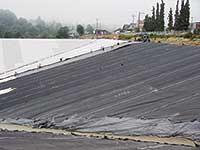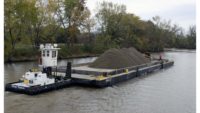Contractors are likely to be stung in a funding mess now playing out at 40 Asarco Superfund sites across the U.S. Water and/or soil are contaminated with arsenic, copper and lead from smelting operations, but the firm has only $125 million to pay for $500 million in cleanups.
 |
| STRETCHED Homeowners at Ruston, Wash., site are looking for payments. (Photo courtesy of the EPA) |
Old mines and smelters helped build the Guggenheim family fortune over a century ago when Meyer Guggenheim gained control of the American Smelting and Refining Co. Mexico City-based Grupo Mexico bought Asarcos remaining assets in 1999 and has been battling mounting losses and ducking cleanup responsibilities ever since (ENR 3/25 p. 12).
Asarco has spent hundreds of millions of dollars on cleanup work nationwide and as of January 2003 was committed to do about $500 million more, according to the U.S. Dept. of Justice. Since Grupo Mexico moved Asarcos main assets offshore in January 2003, the situation has become worse. The parent company lost $3.6 million in the second quarter, compared to a $65-million profit during the same period in 2002. Superfund is of limited help. It started drying up in 1996.
There are other signs of trouble. A group of employees sued the firm in Montana state court, claiming Asarco was selling major equipment from a plant while refusing to pay pensions and saying the plant was going to reopen soon. Asarco also defaulted on $1.7 million owed to homeowners near Ruston, Wash. And cleanups have stopped in Washington, Texas, Montana, Idaho and Colorado while Asarco takes legal action or negotiates to limit work.
Elwin Larson, executive vice president of cleanup contractor and consulting engineer HDR Inc., says Asarco paid the Omaha firm all $20 million for construction of a recent project there. But after Grupo took over, there were "issues near the end where people werent getting paid," says Larson.
By 2001 Asarcos only substantial assets were two copper mines in Peru. In 2002, Grupo Mexico filed with the U.S. Securities and Exchange Commission to sell the mines at a discount to a subsidiary not subject to Superfund liabilitya move that would have left Asarco stripped, bankrupt and unable to pay for any more cleanups, says Whitney Painter of the Mineral Policy Center, Washington, D.C.
At EPAs request, the U.S. Dept. of Justice obtained an injunction blocking the sale, but in January 2003 relented. Grupo Mexico agreed to put about $125 million into a trust fund for Asarcos Superfund liabilities and DOJ allowed the sale.
This leaves Asarco committed to approximately $375 million in Superfund work for which there is no identified funding source. The consent decree leaves few, if any, assets reachable by U.S. courts.
Cash-poor local governments may not be able to make up the difference. Painter expects cuts in all kinds of environmental funding while more Asarco sites are added to Superfunds priority list. Asarco did not return repeated calls.
|



Post a comment to this article
Report Abusive Comment